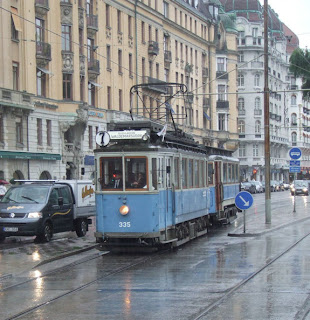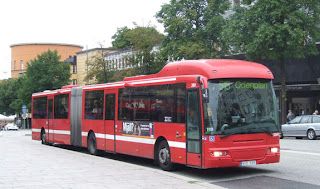Updated 19 November 2014
Canada is a vast country, covering nearly 10 million square kilometres, more than twice the area of the entire European Union. To put this into further context, it is roughly 40 times the size of the United Kingdom, and nearly 30 times the size of Germany, but with only about half the population of either country.
The Trans-Canada Highway stretches from St. John's in Newfoundland to Victoria, British Columbia, a distance of over 7,500km. It passes through two cities which I have already featured, Montréal and Ottawa. Now it's time to head to the western end of the highway, three time zones and nearly 5,000 km from both Ottawa and Montréal.
With a population of around 320,000 in its metropolitan area, Victoria is located at the southern tip of Vancouver Island. The city was founded in 1843 and is named after the reigning monarch of Britain and the Commonwealth at that time, Queen Victoria. The city is the capital of British Columbia province. I have visited twice, in September 2012 and again in July 2014.
In most parts of British Columbia, local transport services are provided by other operators under contract to BC Transit. In Victoria, BC Transit operates the services itself.
The transport network is provided by buses, with a mixture of double-deck and single-deck vehicles.
The double-deck fleet comprises double-deck, tri-axle vehicles.
These buses were manufactured in Britain.
While
some of the double-deckers carry the latest livery of white with grey, dark blue and green
relief, I found plenty still carrying the previous white, red and blue colours.
These images were taken in 2012.
The single-deck fleet is mainly in the latest colours, although the previous white, red and blue scheme is still evident.
 Although many of the single-deckers are of North American manufacture, the fleet does include some British-built Dennis Darts.
Although many of the single-deckers are of North American manufacture, the fleet does include some British-built Dennis Darts.
In 2012, all were in the white, red and blue colours.
By 2014, however, at least one was carrying the latest white, grey, green and dark blue colours.
The racks on the front of BCTransit's buses are for the carriage of bicycles, an arrangement I have also noticed in Vancouver and San Francisco. The British Columbia provincial legislature building forms the backdrop to this image:
Vancouver Island has been home to First Nations people for thousands of years. First Nations heritage, including art and totem poles, is found at various places around Victoria.
 In some of the outlying communities, minibuses operate a small number of services which act as feeders to the main routes into Victoria. This image was taken in Sidney, around 25 kilometres north of Victoria
In some of the outlying communities, minibuses operate a small number of services which act as feeders to the main routes into Victoria. This image was taken in Sidney, around 25 kilometres north of Victoria
Although the minibuses are fitted with bicycle racks, bikes are only carried during daylight hours.
 This image was taken at one of several Park & Ride sites, built alongside main roads to encourage motorists to park outside Victoria and use buses to complete their journeys into the city.
This image was taken at one of several Park & Ride sites, built alongside main roads to encourage motorists to park outside Victoria and use buses to complete their journeys into the city.
The minibus also provides interchange onto the trunk services into Victoria.
Minibuses do appear in Victoria city centre, but not on regular services. They provide specialised transport branded as "HadyDART", for people with impaired mobility.
Although the HandyDART minibuses carry BC Transit colours, they are operated by private contractors rather than directly by BC Transit.
With plenty of double-deckers but no articulated vehicles, nor any trolleybuses or trams, Victoria's public transport system has quite a British feel to it. Unlike most operators in Britain, however, BCTransit offer transfer tickets meaning there is no extra charge if your journey requires you to interchange.
 Turning to longer distance services, coaches operate from a coach terminal in downtown Victoria.
Turning to longer distance services, coaches operate from a coach terminal in downtown Victoria.
Tofino Bus operate services to destinations elsewhere on Vancouver Island.
The coach will use a ferry to cross the strait between Vancouver Island and the Canadian mainland.
Pacific Coach Lines also operate a dedicated service between Victoria and Vancouver Airport.
Regular public transport isn't the only transport to be found in Victoria. There is plenty aimed at tourists as well. As in many cities across the world, open-top buses offer sightseeing tours of Victoria during the summer months.
 Gray Line operate double-deckers which originated in the United Kingdom. As these were built for driving on the left, entrance doors have been added to the right-hand side.
Gray Line operate double-deckers which originated in the United Kingdom. As these were built for driving on the left, entrance doors have been added to the right-hand side.
 The Gray Line fleet contains some quite elderly vehicles. This one is notable.
The Gray Line fleet contains some quite elderly vehicles. This one is notable.
In 1965 when it was new, it was the first rear-engined double-decker to be delivered to the British city of Derby. Forty-nine years later, it was still in regular use, showing tourists the sights of Victoria.
Although some of the buses previously used in Britain retain their front entrance doors, this vehicle does not.
A second bus dating from 1965 retains its destination screen from Derby. It will have been many years since it last went to Nottingham Road, but that is what it was displaying when I caught up with it in 2014!
 There is an even older former British bus on the Sightseeing Victoria tour. Several Canadian cities are home to former London Routemasters, and Victoria is no exception.
There is an even older former British bus on the Sightseeing Victoria tour. Several Canadian cities are home to former London Routemasters, and Victoria is no exception.
This bus was built in 1959.
 Although Routemasters are famed for their "hop-on, hop-off" open platforms at the rear, this one has had its platform panelled over.
Although Routemasters are famed for their "hop-on, hop-off" open platforms at the rear, this one has had its platform panelled over.
 Big Bus use elderly single-deck vehicles on their sightseeing tours.
Big Bus use elderly single-deck vehicles on their sightseeing tours.
Despite the prominent union flag, there is nothing British about these left-hand drive vehicles!
In contrast, modern vehicles are operated by CVS Tours.
The service operates as a traditonal tour, from a single departure point outside the Empress Hotel, rather than as a hop-on, hop-off service.
 As an alternative to bus tours, horse-drawn carriages operate for hire around downtown Victoria.
As an alternative to bus tours, horse-drawn carriages operate for hire around downtown Victoria.
During the summer season, a number cruise ships call at Victoria as they tour the Pacific coast. The ships use a deep water terminal at Ogden Point, a short distance out of Victoria city centre. Shuttle buses link the cruise ships' terminal with the city centre.
 In summer 2014, I noted some of BC Transit's fleet running on the shuttle. These buses were on loan to the operator of the shuttle service.
In summer 2014, I noted some of BC Transit's fleet running on the shuttle. These buses were on loan to the operator of the shuttle service.
Although the cruise ships use an out-of-town terminal, Victoria is built around an inner harbour. The Hippo Tour operates during the summer season, using amphibious vehicles operating both on the road and on water.
The hippos share the harbour with a number of other vessels.
This image was taken at Fisherman's Wharf, a popular tourist destination in Victoria.
As well as water taxis, the 12-seat vessels also operate a Victoria Harbour tour.
Larger boats provide a service to and from the cruise ship terminal at Ogden Point, complementing the bus shuttle.
 Several companies offer whale watching tours from Victoria inner harbour.
Several companies offer whale watching tours from Victoria inner harbour.
Two scheduled ferry services also operate into the inner harbour, bringing passengers into the centre of Victoria from the United States of America.
 Black Ball Ferry Line operates one vessel from Port Angeles, a journey of around 90 minutes across the Strait of Juan de Fuca.
Black Ball Ferry Line operates one vessel from Port Angeles, a journey of around 90 minutes across the Strait of Juan de Fuca.
The Victoria Clipper operates to and from Seattle, with a sailing time of around 3 hours.
Sea
planes, which take off and land on water, link downtown Victoria with
Vancouver and Seattle. A seasonal service operates to Whistler during the
summer. The Seattle service is provided by Kenmore Air, while Harbour Air operate the routes to Vancouver and Whistler.
Conventional flights from Victoria use the airport approximately 25 kilometres north of the city.
 Although BCTransit do serve the airport, it is only their local minibus services which go there. There is no direct link to or from downtown Victoria. YYJ Shuttle operates a minibus shuttle between the airport and hotels in Victoria.
Although BCTransit do serve the airport, it is only their local minibus services which go there. There is no direct link to or from downtown Victoria. YYJ Shuttle operates a minibus shuttle between the airport and hotels in Victoria.
No rail services operate to Victoria. There had been a train from Victoria once a day to Courtenay, along the coast of Vancouver Island, but this was suspended in 2011. Tracks into Victoria have since been removed. BC Transit is, however, looking at proposals to introduce light rapid transit to Victoria in the longer term.
In fact,
it isn't quite true to say that there are no railways in Victoria.
There are, and Victoria has trams and trolleybuses too. But we're not
talking full-size. Miniature World is one of the visitor attractions in the city centre, with a number of layouts depicting different scenes.
Whilst I was in Victoria in 2012, purely by chance I ran into the owner of the BusDrawings website, which contains a huge number of bus and rail images from Canada and the USA.
I'll end this post as I started it, with some more statistics, again to provide context to distances in this part of the world. British Columbia province covers nearly a million square kilometres, making it almost 4 times the size of the United Kingdom. It has less than a tenth of the population of the UK.
In closing, I would like to thank my sister Alison for her help with this post :o)
 Traffic in Sweden used to drive on the left. This was changed in 1967 to bring Sweden into line with its neighbours. One effect of this change was the closure of Stockholm's tram system.
Traffic in Sweden used to drive on the left. This was changed in 1967 to bring Sweden into line with its neighbours. One effect of this change was the closure of Stockholm's tram system.


 The heritage vehicles aren't the only trams to be found on Stockholm's streets today. Modern trams entered service in 2000 on the Tvärbanan, an orbital route through Stockholm's western and southern suburbs.
The heritage vehicles aren't the only trams to be found on Stockholm's streets today. Modern trams entered service in 2000 on the Tvärbanan, an orbital route through Stockholm's western and southern suburbs.  Part of the Tvärbanan route runs on-street, often segregated from general traffic, but there are also sections on reserved track.
Part of the Tvärbanan route runs on-street, often segregated from general traffic, but there are also sections on reserved track.




























































































